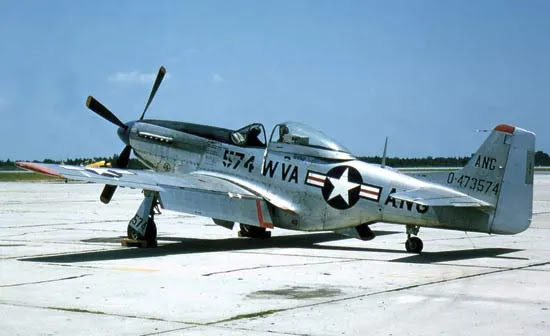During World War II, the United States produced two of the most iconic fighters of the era: the Lockheed P-38 Lightning and the North American P-51 Mustang. Both were exceptional aircraft in their own right, but they achieved their fame using very different engine and boost systems.
The P-38 used turbo-superchargers to power its twin Allison engines at high altitudes, while the P-51 became legendary when fitted with a Packard-built Rolls-Royce Merlin engine using a two-stage, two-speed mechanical supercharger. This naturally raises the question: was the P-38’s turbocharged system ever considered for use in the P-51?
The answer is complex—but historically, no serious attempt was made to fit the P-38’s turbo-supercharged system into the Mustang, and there are good reasons why.
Understanding the P-38’s Turbocharged System
The P-38 Lightning was one of the few WWII fighters to use a true exhaust-driven turbocharger, developed by General Electric. It used the Allison V-1710 engines, which lacked an advanced mechanical supercharger but were paired with high-altitude-capable turbochargers mounted in the rear booms of the twin-fuselage aircraft.
This setup gave the P-38 excellent high-altitude performance and was particularly effective in the vast Pacific theater. However, the system was bulky, complex, and required careful engineering to manage the airflow, heat, and control systems.
The P-51’s Evolution and the Merlin Engine
The P-51 Mustang started its service with the same Allison V-1710 engine, which performed well at low altitudes but struggled at higher elevations. Recognizing the need for a true high-altitude performer, engineers replaced the Allison with a Rolls-Royce Merlin engine, which used a two-stage mechanical supercharger.
This upgrade transformed the P-51 into one of the most dominant fighters of the war. The Merlin-powered P-51 could escort bombers deep into enemy territory in Europe, providing long-range, high-altitude coverage that few other planes could match.
Why the Turbo-P-38 System Was Not Used in the P-51
Several key factors explain why the P-38’s turbo-supercharged system was not adopted for the P-51:
Space and Weight Constraints: The turbo system required large ducting, intercoolers, and plumbing, which were feasible in the P-38’s twin-boom layout but would have been nearly impossible to integrate into the P-51’s compact, single-fuselage design without drastically altering its aerodynamics and weight balance.
Production Efficiency: By the time the P-51B (the first Merlin-powered Mustang) entered mass production, it was clear that the Merlin engine provided superior performance without needing a complex turbo system. It was cheaper, lighter, and easier to maintain in the field.
Design Simplicity: The mechanical supercharger used in the Merlin was more robust and reliable under combat conditions. It avoided the technical and maintenance issues that plagued early P-38s with their turbo systems in European winter climates.
Logistics and Development Timeline: The development of the Merlin-powered Mustang aligned perfectly with Allied needs by late 1943. There was no time—or need—to re-engineer the Mustang for an entirely different boost system
